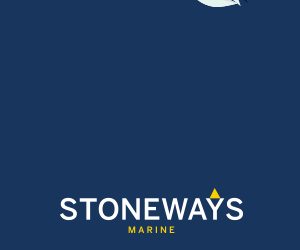
National 18
The National 18' began in 1938 following a design competition organised by the then YRA (now RYA) and Yachting World magazine.
The original idea was that of Frank Knowling of Whitstable YC (later to be known as the father of the class) for an 18-foot sailing dinghy, suitable for day sailing, yet fast enough to be of interest to racing sailors and at a reasonable cost. (The first rather hopeful restriction of the original class rules was "Price not to exceed £125 complete with spars, all equipment and designer's fee but not including sails"). The plan was to produce an affordable national alternative to the many local one-designs of about this size to be found right round the coast of the British Isles. Many of these local estuary classes survive today, for example the Mermaid in Dublin, Thames Estuary OD, Chichester Harbour 18 etc.
The well-known designer Uffa Fox won the competition (over the Laurent Giles submitted version) with his 'Ace' design for a clinker-built wooden boat. National 18' number 1, 'Hurricane', was owned by Stanley Beale and sailed at Whitstable, with No.2 'Gust' and No.3 Foam''.
Initial enthusiasm was held back by the effects of World War II but a good deal of 18' building got underway soon afterwards, when mahogany was again available for boat-building and the class became active especially in the Thames Estuary area. By 1950, fleets had appeared at clubs dotted all around the British Isles and Ireland, the Class Association having been formed in 1947.
Although most boats were built to the 'Ace' design, the class had always been 'restricted' rather than 'one-design' and boats with a reduced number of wider planks were built when glued plywood construction was adopted and even one moulded carvel boat was built (252 'Sabon').
Several of the wooden 18's, now called 'Classics' are still in commission, and regularly race, principally at Bosham SC. They include No15 Tinkerbell, built in 1938 and still very competitive.
With the advent of GRP and the rising costs of hard woods, the Class asked Ian Proctor in the late '60's to design a fibreglass hull that would not outclass the existing boats. In this he was successful and it was some time before a Proctor hull won the championships. The first new Proctor, 'Genivieve' was exhibited at the Crystal Palace Dinghy Show of 1970 when a bare hull cost £153. Since then the Class has progressively reduced minimum hull and centreboard weight, and introduced a single trapeze. Also a restriction which requires all new hulls to come from the class mould so they are in effect one-design. Rigs have been optimised and more recently carbon spars introduced.
These changes produced a boat known in the Class as an 'Ultimate' which is fast and exciting to sail and which has provided close and competitive racing for fifteen or so years, both locally and at the annual National Championships. The Royal Cork Yacht Club has the largest fleet.
The class strives to be inclusive in providing heathy competition for all generations of 18s through handicaps and separate starts. Thus though the major trophies at National Championships are awarded in the Ultimate class, there are trophies also for the Pen-ultimates (heavy GRP) and the Classics.
In 2012 the class mould was declared unservicable, and there was much debate about what to do next. This culminated in a request to Phil Morrison to design a hull that was sleeker, lighter, faster and safer, and in so far as reasonably possible within the existing measurement restrictions.
The Morrison prototype was financed by supporters of the Class and built at The Boatyard at Bere in 2013. Named 'Odyssey' and trialled extensively, she ticks all the boxes, is a pleasure to sail and has proved a great success. This development will undoubtedly give the Class a new lease of life, and production of new boats is already under way at White Formula in Brightlingsea.
in association with
 Show UK nationals gear guide from
Show UK nationals gear guide from
Enter details for
at the
nationals
| Pos | Crew | Mast | Boom | Spi Pole | Main | Jib | Spinnaker | Rudder | Board | Hull |
|---|







